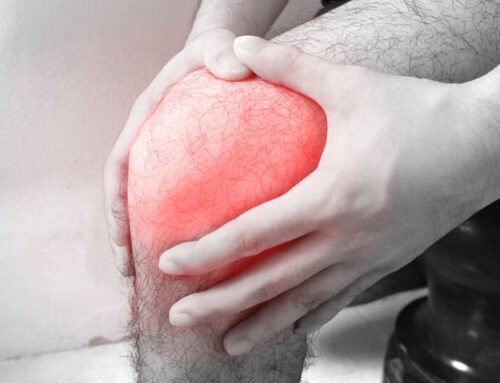
Tips For Creating a Pain Journal
Introduction
If you’re living with chronic pain or even occasional flare-ups, you know how disruptive it can be to your daily life. A pain journal is an excellent tool to help you better understand and manage your pain. But how can simply writing things down make a difference? Well, it turns out that tracking your pain helps you identify patterns, triggers, and effective treatments. It’s like being your own detective when it comes to pain management. Whether you’re dealing with migraines, arthritis, or post-surgical pain, a journal can empower you to take control.
This article will guide you through everything you need to know about creating a pain journal and show how it can become a powerful part of your pain management strategy.
What is a Pain Journal?
A pain journal is a record where you document details about your pain, such as intensity, triggers, duration, and even emotional responses. Unlike a general health diary, a pain journal is more specific and focuses entirely on your experience with pain.
It serves as a log that you and your healthcare provider can use to pinpoint causes, track treatment progress, and identify trends. Think of it as a bridge between your experience and your doctor’s medical expertise.
The Benefits of Keeping a Pain Journal
1. Helps Identify Pain Triggers
By consistently tracking your pain, you’ll begin to notice patterns. Did your pain increase after certain foods, activities, or stressors? Journaling helps you connect the dots and avoid triggers.
2. Improves Communication with Healthcare Providers
Doctors rely on accurate information to diagnose and treat you. Your journal provides detailed insights, making their job easier and increasing your chances of effective treatment.
3. Tracks Treatment Progress
If you’re trying new medications, therapies, or exercises, a journal helps measure their impact over time. You’ll be able to see whether a specific treatment is helping or not.
4. Empowers You to Manage Pain Proactively
Understanding your pain means you can take proactive steps. Instead of feeling helpless, you’ll have the tools to take action—whether that’s resting, stretching, or avoiding specific triggers.
How to Get Started with a Pain Journal
1. Choose Your Format: Digital vs. Paper Journals
- Paper Journals: If you enjoy handwriting and prefer physical notebooks, a simple notebook or planner can be perfect.
- Digital Journals/Apps: Apps and templates offer features like reminders, charts, and analysis tools.
2. Gather Your Tools
- A notebook or pain journal template
- A pen or colored markers (if you prefer visual notes)
- Pain-tracking apps (like “My Pain Diary” or “Curable”)
3. Decide on Journaling Frequency
Start with daily entries. As you get used to it, you can adapt the frequency based on your needs.
Essential Components of a Pain Journal
To make your pain journal effective, ensure you include these key components:
- Date and Time: When did the pain occur?
- Location: Where in your body did you feel the pain?
- Intensity: Rate your pain on a scale of 1 to 10.
- Type of Pain: Was it sharp, dull, burning, or throbbing?
- Duration: How long did the pain last?
- Activities and Triggers: What were you doing when the pain started? Did anything trigger it?
Adding these details ensures your journal gives a clear and accurate picture of your pain episodes.
Additional Details to Include in Your Pain Journal
While the basics are essential, adding extra details can make your journal even more useful:
- Emotional State and Stress Levels: Pain often links to emotions. Were you stressed, anxious, or relaxed?
- Sleep Quality: Poor sleep can worsen pain. Track how well you slept the night before.
- Diet and Hydration: Certain foods or dehydration might influence your pain.
- Medications and Remedies: Write down any medications, home remedies, or therapies you tried and whether they worked.
These additional factors can help uncover hidden triggers and provide a holistic view of your pain experience.
How to Track Pain Intensity Effectively
1. Use a Pain Scale
A simple 0-10 scale is widely used, where 0 means no pain, and 10 is the worst pain imaginable.
2. Visual Analog Scales (VAS)
A VAS is a line where you mark how intense your pain feels. It’s a visual alternative to the numeric scale and works well for those who struggle with numbers.
Consistent pain tracking with these tools helps you see trends over time and gives your doctor valuable information.
Customizing Your Pain Journal for Personal Needs
A pain journal isn’t a one-size-fits-all solution. You can adapt it to suit your specific needs and lifestyle.
Chronic Pain Journals vs. Acute Pain Logs
- Chronic Pain Journals: If you experience long-term pain conditions like arthritis or fibromyalgia, a daily journal might be helpful to track recurring patterns.
- Acute Pain Logs: For short-term or injury-related pain, you can log entries only when you experience pain.
Journaling Frequency
- Daily Journaling: Perfect for chronic pain to monitor changes over time.
- As-Needed Journaling: Suitable for unpredictable pain flare-ups or acute pain episodes.
Customizing your journal allows it to reflect your reality. Whether you prefer quick bullet points or detailed narratives, consistency is the key to success.
Using Digital Tools and Apps for Pain Journaling
While traditional notebooks work well, digital tools and apps can simplify the process and provide extra features.
Best Pain Tracking Apps
- My Pain Diary: Allows you to log pain details and analyze trends.
- Curable: Combines journaling with educational content about pain management.
- CareClinic: Helps track symptoms, medications, and triggers.
Pros of Digital Journals
- Easy to organize and access
- Built-in reminders to ensure you log regularly
- Visual charts and summaries to see trends at a glance
Cons of Digital Journals
- Requires access to a device
- Some apps may have subscription fees
If you’re tech-savvy, apps can save time and help you analyze your data effectively. But if you prefer the simplicity of pen and paper, go with what feels right for you!
How a Pain Journal Can Help Your Doctor
One of the most valuable aspects of a pain journal is its ability to assist healthcare professionals in understanding your condition better.
1. Provides Accurate Details for Diagnosis
Instead of vague answers like “I hurt all the time,” your journal provides specific information—where, when, and how often the pain occurs. This helps your doctor make a more accurate diagnosis.
2. Assists in Assessing Medication Effectiveness
Doctors can use your journal to see how medications or therapies are working. If you’ve started a new painkiller or treatment plan, tracking changes helps determine its success.
3. Detects Patterns and Recommends Lifestyle Changes
Your doctor might notice patterns you missed—like pain worsening after poor sleep or certain foods—and suggest changes to improve your quality of life.
By bringing your pain journal to appointments, you make it easier for your doctor to provide personalized and effective care.
Tips for Making Your Pain Journaling Habit Stick
Starting a new habit can be challenging, but these tips will help you stick to it:
- Set Reminders
Use alarms, sticky notes, or app notifications to remind yourself to write in your journal. - Keep Entries Short and Simple
You don’t have to write essays! Bullet points or short sentences work just fine. - Make It Part of Your Routine
Journal at the same time each day—like before bed or right after breakfast. This makes it easier to remember. - Reward Yourself
Track your journaling streak and treat yourself when you hit milestones. For example, after a week of consistent logging, reward yourself with a small treat or self-care activity. - Focus on Progress, Not Perfection
Don’t stress about missing a day. What matters is consistency over time, not perfection.
With a little effort, pain journaling can become a habit that improves your understanding of your body and pain patterns.
Common Mistakes to Avoid When Keeping a Pain Journal
While pain journaling is simple, there are some common pitfalls to avoid:
- Forgetting to Include Triggers and Context
Don’t just write “had pain today.” Include what you were doing, eating, or feeling before the pain started. - Overcomplicating Entries
Keep it simple! Long, detailed entries can become overwhelming and discourage you from journaling regularly. - Not Journaling Consistently
Consistency is key. Skipping days or weeks can make it harder to spot patterns and trends. - Ignoring Emotional and Lifestyle Factors
Pain isn’t just physical—it’s influenced by stress, sleep, and emotions. Always include these in your journal.
By avoiding these mistakes, your journal becomes a more effective tool for pain management.
The Emotional Benefits of Pain Journaling
Beyond physical pain, journaling can help you deal with the emotional impact of living with pain.
1. Processing Emotions
Pain can be frustrating, isolating, and overwhelming. Writing about how it makes you feel—angry, sad, or anxious—helps you process those emotions.
2. Reducing Stress and Anxiety
Expressing your thoughts on paper (or digitally) can relieve stress. It’s like unloading the mental burden pain often creates.
3. Finding Empowerment
When you track your pain, you take control. Instead of feeling helpless, you gain insights that empower you to manage pain better and live a more balanced life.
Pain journaling isn’t just about the body—it’s about nurturing your mind and emotional well-being, too.
Pain Journaling for Specific Conditions
Different conditions may require slight adjustments to how you keep a pain journal:
1. Arthritis
- Track joint stiffness, swelling, and weather changes.
- Note physical activities and rest periods.
2. Migraines
- Include triggers like food, light, or stress.
- Track aura symptoms and duration.
3. Fibromyalgia
- Record widespread pain, fatigue, and sleep quality.
- Log energy levels and flare-up days.
4. Post-Surgical Recovery
- Note healing progress and medication effectiveness.
- Track activity levels and pain intensity throughout recovery.
Adjusting your pain journal based on your condition ensures you’re capturing the most relevant information.
Conclusion
A pain journal is a simple but powerful tool for managing and understanding your pain. By recording details about your pain episodes, triggers, and remedies, you can identify patterns, improve communication with healthcare providers, and take control of your pain management journey. Whether you’re using a notebook or a pain tracking app, consistency is key. Start small, stay committed, and you’ll soon see how much a pain journal can help improve your quality of life.
Don’t let pain control you—start journaling today and take the first step toward better pain management.
FAQs
1. What’s the best way to organize a pain journal?
The best way is to keep it simple: include the date, time, pain intensity, location, duration, and any triggers. Bullet points or tables work well for organization.
2. How long does it take to see results from journaling?
You may notice patterns after a few weeks of consistent journaling. It depends on how frequently you track your pain and how detailed your entries are.
3. Can I use a regular diary as a pain journal?
Yes! A regular notebook works perfectly fine as long as you include the key details like pain intensity, triggers, and duration.
4. What if I don’t experience pain daily? Should I still write?
Absolutely! Log entries only when you experience pain. You can also include “pain-free” days to track improvement.
5. Are digital apps better than traditional journals?
It depends on your preference. Digital apps offer convenience and features like reminders, while traditional journals provide a more personal touch.
Share this article
Follow us
A quick overview of the topics covered in this article.
- Introduction
- What is a Pain Journal?
- The Benefits of Keeping a Pain Journal
- How to Get Started with a Pain Journal
- Essential Components of a Pain Journal
- Additional Details to Include in Your Pain Journal
- How to Track Pain Intensity Effectively
- Customizing Your Pain Journal for Personal Needs
- Using Digital Tools and Apps for Pain Journaling
- How a Pain Journal Can Help Your Doctor
- Tips for Making Your Pain Journaling Habit Stick
- Common Mistakes to Avoid When Keeping a Pain Journal
- The Emotional Benefits of Pain Journaling
- Pain Journaling for Specific Conditions
- Conclusion
- FAQs











